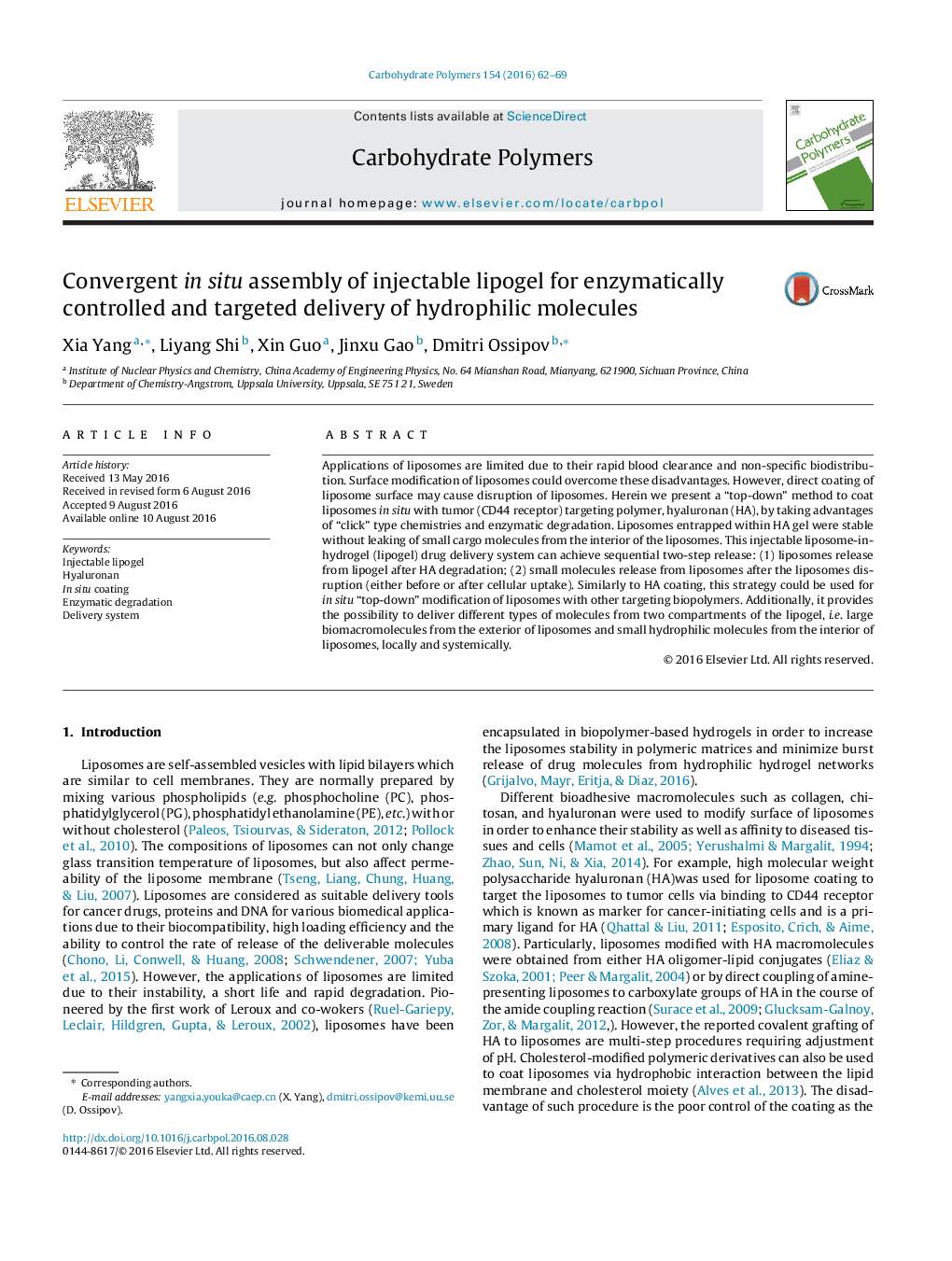| Article ID | Journal | Published Year | Pages | File Type |
|---|---|---|---|---|
| 1384693 | Carbohydrate Polymers | 2016 | 8 Pages |
•A method of in situ labeling of liposomes with hyaluronic acid (HA) was developed.•The hybrid liposome-hydrogel (lipogel) can be injected and enzymatically degraded.•This method has high potential in clinical applications that require sustain localized delivery of targeted liposomes.
Applications of liposomes are limited due to their rapid blood clearance and non-specific biodistribution. Surface modification of liposomes could overcome these disadvantages. However, direct coating of liposome surface may cause disruption of liposomes. Herein we present a “top-down” method to coat liposomes in situ with tumor (CD44 receptor) targeting polymer, hyaluronan (HA), by taking advantages of “click” type chemistries and enzymatic degradation. Liposomes entrapped within HA gel were stable without leaking of small cargo molecules from the interior of the liposomes. This injectable liposome-in-hydrogel (lipogel) drug delivery system can achieve sequential two-step release: (1) liposomes release from lipogel after HA degradation; (2) small molecules release from liposomes after the liposomes disruption (either before or after cellular uptake). Similarly to HA coating, this strategy could be used for in situ “top-down” modification of liposomes with other targeting biopolymers. Additionally, it provides the possibility to deliver different types of molecules from two compartments of the lipogel, i.e. large biomacromolecules from the exterior of liposomes and small hydrophilic molecules from the interior of liposomes, locally and systemically.
Graphical abstractFigure optionsDownload full-size imageDownload as PowerPoint slide
